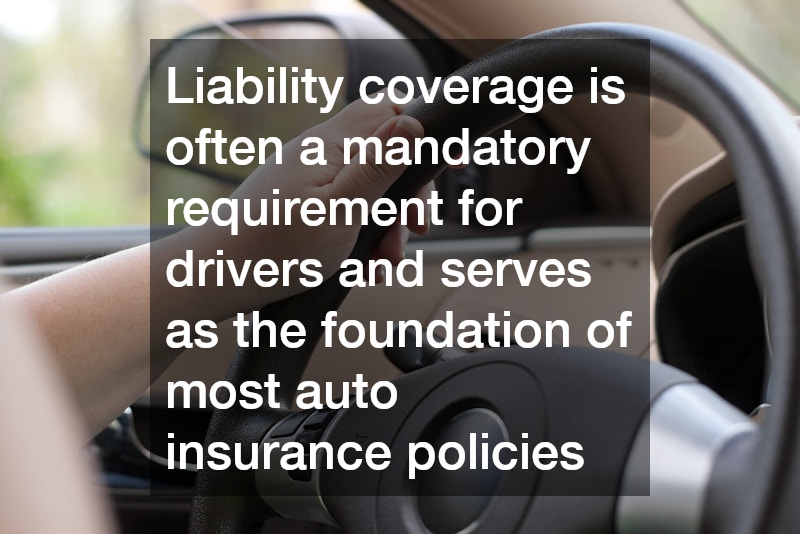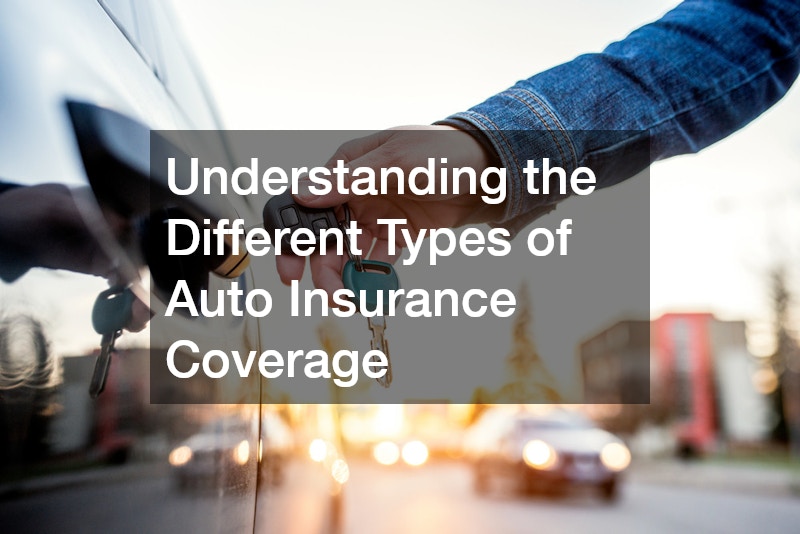Auto insurance is a critical component of vehicle ownership, providing financial protection in the event of accidents, theft, or damage. With a myriad of options available, understanding the different types of auto insurance coverage is essential for selecting the right policy for your needs. From basic liability coverage to comprehensive plans, knowing the nuances of each type ensures that you are adequately protected on the road. This guide aims to walk you through the various forms of auto insurance coverage, helping you make informed decisions to safeguard yourself and your vehicle.
Liability Coverage
Liability coverage is often a mandatory requirement for drivers and serves as the foundation of most auto insurance policies. This type of insurance is designed to cover the costs associated with bodily injury and property damage that you may cause to others in an accident. It typically includes two components: bodily injury liability and property damage liability. These coverages ensure that you can compensate other parties for medical bills, repair costs, and other liabilities, protecting you from extensive out-of-pocket expenses. Failing to maintain adequate liability coverage not only exposes you to financial risk but can also result in legal penalties and suspension of your driving privileges.
Collision Coverage
Collision coverage is another vital component of auto insurance, especially for individuals with newer vehicles or those who wish to protect their investment. This type of coverage pays for the damage to your car resulting from a collision with another vehicle or object, regardless of who is at fault. It’s worth noting that collision coverage often comes with a deductible, which is the amount you must pay out of pocket before your insurer covers the remaining costs. While it may increase your premium, having collision coverage can save you substantial amounts in repair costs if an accident occurs. For leased or financed cars, lenders typically require both collision and comprehensive coverage as part of the agreement.
Comprehensive Coverage
Comprehensive coverage offers protection against damages not caused by collisions, providing peace of mind against various risks. This includes incidents such as theft, vandalism, natural disasters, and damage from falling objects or animals. Like collision coverage, comprehensive insurance requires a deductible payment before the insurer takes over the remaining costs. Many car owners prefer combining collision and comprehensive coverage to ensure complete protection of their vehicles. Moreover, if you reside in an area prone to harsh weather conditions or high rates of vehicle theft, comprehensive coverage becomes a smart choice to shield you financially.
Uninsured/Underinsured Motorist Coverage
Uninsured and underinsured motorist coverage (UM/UIM) provides an extra layer of security in situations where the at-fault party lacks adequate insurance. In the unfortunate event of an accident with an uninsured or underinsured driver, this coverage steps in to cover your medical expenses, lost wages, and other damages. Given that over 13% of U.S. drivers are uninsured, UM/UIM coverage becomes an indispensable part of a comprehensive auto insurance plan. It not only safeguards your financial health but also protects against scenarios that the at-fault driver cannot financially compensate. As such, UM/UIM coverage serves as an essential safeguard, ensuring your recovery isn’t hindered by someone else’s lack of insurance.
Personal Injury Protection (PIP) and Medical Payments Coverage
Personal Injury Protection (PIP) and Medical Payments (MedPay) are coverages designed to cover medical expenses for you and your passengers after an accident, regardless of fault. PIP is sometimes referred to as “no-fault” coverage and can cover other costs such as lost wages, rehabilitation services, and even funeral expenses. MedPay, on the other hand, focuses solely on medical expenses but may be more affordable than PIP. Both types of coverage can be crucial in states with high medical costs, reducing the financial burden of healthcare expenses following an accident. When choosing between PIP and MedPay, consider your health insurance coverage and the likelihood of needing assistance with related non-medical expenses.
Conclusion
In conclusion, understanding the different types of auto insurance coverage is crucial in securing the appropriate protection for you and your vehicle. From liability coverage to options like collision, comprehensive, UM/UIM, and PIP or MedPay, each serves a specific purpose in covering different risks and scenarios. Selecting the right mix of coverages ensures you are not only complying with legal requirements but also financially protected against unforeseen events. By carefully evaluating your needs and circumstances, you can tailor an auto insurance policy that offers peace of mind and robust protection. Remember, adequate coverage today can dismantle financial barriers in the event of a future mishap.

